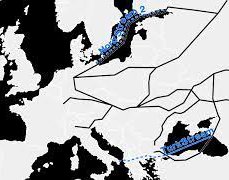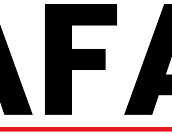With the COVID-19 Lockdowns, “consumers have reduced spending on services and bought more artifacts“ (IMF-Blog), accelerating the rebound in manufacturing production, but the logistical crisis of the “Supply Chain” (NY Times) and the tail end of the pandemic have put global trade even more in crisis. Europe risks another energy crisis (Bloomberg) due to the soaring cost of gas, driven by the Ukrainian crisis. Agenda against inflation.
New lockdowns and inflation
When countries asked people to stay at home to control COVID-19, consumers reduced spending on services and instead bought more artifacts. The reopening of economies has increased manufacturing output, but renewed lockdowns and a shortage of intermediate inputs from chemicals to microchips have caused the industry’s recovery to stall. The prices of major consumer goods rose rapidly as delivery times reached record levels, starting a debate about inflation and the course of monetary policy.
In a new document, the International Monetary Fund (IMF) estimates that euro area manufacturing output in the autumn of 2021 would have been about 6% higher without supply constraints. Based on the historical correlation between production and overall production, we estimate that gross domestic product would have been about 2% higher, equivalent to about a year of growth in normal pre-pandemic periods for many European economies.
The production brake has been greatest in countries where manufacturing companies operate at the downstream end of global value chains and depend on highly differentiated intermediate inputs. Key examples include countries with large automotive sectors, such as Germany and the Czech Republic, where manufacturing output would have been up to 14 percent higher.
Supply constraints have also played a significant role in fueling producer price inflation in the euro area, but also strong demand. The manufacturing component of producer price inflation was about 10 percentage points higher than in pre-pandemic times in the first three quarters of 2021. IMF Estimates that supply shocks can explain about half of the increase in manufactured goods price inflation. The rest is mainly explained by the increase in demand.
Supply disruptions had a minor impact on basic consumer prices (excluding energy and food prices). This measure of inflation was only about 0.5 percentage points higher over the same period due to supply constraints for manufactured goods than it would otherwise have been. This minor effect is not surprising because goods make up less than half of the consumption basket. The prices of services, which account for more than half, are less sensitive than those of goods to manufacturing supply shocks.
Problems may persist
Globally, we find that up to 40% of supply constraints in manufacturing can be traced back to closures, which should only have transient effects on inflation. The same goes for adverse weather conditions and industrial accidents that have hampered the production of microchips and cars in 2021. Other factors leading to supply constraints, such as labour shortages (which explain up to 10% of manufacturing supply constraints globally) and ageing logistics infrastructure, may, however, have more persistent effects on supply and inflation than closures.
Late last year, industry experts predicted that the shortage of supplies for cars would largely dissipate by mid-2022 and wider bottlenecks by the end of this year. Omicron injected new uncertainty. Europe and China have imposed new restrictions and further disruptions could follow. All in all, supply disruptions could last longer, perhaps until 2023.
“Supply Chain” in crisis due to inadequate logistics capacity
As researcher, Stavros Karamperidis, wrote in The Conversation, that in its essential aspects the supply chain crisis is “a classic imbalance between supply and demand”: consumers want to buy goods and products but the system is not able to provide them at a sufficient pace.
In reality, this crisis is made up of numerous crises put together, which concern production, transport, raw materials, labor, the commercial policies of companies and the economic decisions of governments; and the system is so interconnected and complicated that even economists find it difficult to find out and give due weight to all causes: as Tyler Cowen wrote in Bloomberg, “some fundamental nerve centers of the world economy have been hit by a mixture of COVID and bad luck”.
It is certain that one of the triggers of the crisis was the coronavirus pandemic. At the beginning of the pandemic, over a year and a half ago, several goods-producing and exporting countries, such as China and Vietnam, but also Germany, were affected by the first wave of infections. Many factories were forced to stop production or slow it down significantly, due to infections or measures introduced by governments to limit the spread of COVID-19. In general, in the first period of the pandemic it was believed that a substantial part of the manufacturing industry would collapse.
As the New York Times has written, even transportation companies, anticipating a collapse in world trade, greatly reduced their shipments, cut thousands of trips and in some cases took advantage of it to renovate their container ships, planning to keep them stationary for many months.
But the predictions were wrong. Some services such as catering and tourism actually collapsed, but consumer demand for goods did not shrink: rather, it changed considerably. Forced home by the restrictions caused by the pandemic, people began to buy computers, printers and monitors to be able to work from home, furniture to organize home offices, TVs, consoles and video games to pass the time, appliances and accessories for cooking at home, among other things.
The increase in demand was strong and sudden, and put in crisis a whole series of manufacturing sectors whose production planning is usually very predictable and marked by regular rhythms, which found themselves displaced.
Europe risks another energy crisis due to scarcity of reserves
Europe risks a repeat of this winter’s energy crisis without rules forcing public services to store enough gas to ensure security of supply.
After struggling with the lowest stocks in over a decade in this warming season, once again there is no economic incentive for energy giants from RWE AG and Uniper SE to Gazprom PJSC to store fuel. This is because traders usually buy cheap gas in the summer to sell it at a higher price over the course of the year, and that premium has been almost exhausted by the market.
Politicians are worried. Europe relies more on intermittent energy sources such as wind and solar, and with domestic gas production declining, dependence on imports from Russia is only increasing. Germany plans to force energy companies to build up reserves as part of a package of measures to be considered in the spring, but a number of countries still do not have such rules in place.
Dependence on Russia
About a third of Europe's gas comes from Russia (Source: European Union Agency for the Cooperation of Energy Regulators -ACER) -
“If Europe’s energy security is increasingly dependent on stocks and seasonal flexibility, it is necessary to ensure that those stocks are replenished,” said Jason Bordoff, director of Columbia University’s Center on Global Energy Policy. ”It’s not something that private sector utilities have to do, it’s the role of government to ensure that this happens.”
Security of supply is now at the forefront of the energy debate in Europe after policymakers entered the current crisis unprepared, with many betting that the crisis may be short-lived. Tensions between the West and Russia over Ukraine are also worrying: about a third of Russian gas exported to Europe flows through the pipelines that cross Ukraine.
Move quickly
Politicians must act quickly if they want to put in place regulations that force traders to store gas, preferably before the start of the so-called injection season, when filling the fuel depots of European stocks.
“We have to do it extremely fast,” said Thierry Bros, a former energy analyst who is now a professor at the Paris Institute of Political Studies. “If it’s not in place by the beginning of April, it’s going to be too late, because people will say, ‘I need a whole summer period to reinject the gas.’”
The energy squeeze in Europe began when a long, cold winter left gas storage sites depleted last year. With demand rebounding, Russian flows shrinking since the summer, and the increased amount of gas used in power generation, prices have never been low enough to induce companies to build stocks. The same is happening now, with fuel for delivery in the winter trade at a premium of only 30 euro cents on the summer contract, down from a normal rate of more than 2 euros.
“Europe is now in a similar situation we were in last year when it comes to the summer-winter spread,” Michael Muller, chief financial officer of German energy giant RWE, said in an interview earlier this month. However, some traders may choose to create stocks to have a chance to sell later if prices rise in the same way as in 2021, he said.
European gas futures went out of control last year, rising as much as 40% in a single day in October. A similar jump was also observed in December, before record prices attracted a fleet of U.S. cargoes of liquefied natural gas. This boost to supply, combined with the mild weather this winter, has helped ease market tension.
The European Union does not have the power to impose minimum levels of gas storage, but it can encourage member states to do so. In December, it proposed a more strategic approach to storage, including steps to ensure high levels at the beginning of the heating season. The International Energy Agency also suggested similar measures last month, when it accused Russia of withholding gas from Europe and failing to fill its EU storage sites.
Energy security
“Russia is partly responsible for what is happening in Europe today because it has not filled stocks enough and is not making more gas available on the spot market,” said Bordoff of the CGEP, also a former energy and climate adviser in the Obama administration. “European leaders must recognize that hoping that Russia will do these things is not a sufficient energy security strategy.”
Moscow has repeatedly stated that it is fulfilling all the obligations under its long-term contracts.
Poland, Italy and France already have mechanisms in place to ensure a certain level of gas stocks. This has helped keep the lights on even as soaring wholesale costs have crippled some smaller energy suppliers and governments across Europe have pledged billions to cushion the blow of higher bills for consumers.
The December EU proposals, which also allow for the voluntary joint supply of reserves by network operators, imply that Member States should identify and address potential risks affecting their gas storage. Germany is considering a plan, while neighboring Austria and the Netherlands currently do not have regulation to safeguard reserves.
“We need to make sure that our storage capacities are filled in spring and summer,” European Energy Commissioner Kadri Simson said earlier this month. “We can no longer find ourselves in the same situation as this winter.”
Anti-inflation agenda
With supply constraints likely to persist, the challenge for policymakers is to support the recovery without allowing too high inflation to take root.
The first line of defense is to address bottlenecks in procurement directly with regulatory measures where possible, such as speeding up the licensing of transport and logistics workers, temporarily easing restrictions on port opening hours, simplifying customs inspections, loosening immigration rules to alleviate labor shortages, and imposing practices that limit the spread of the virus and protect the health of the workers.
Fiscal measures should also be actively implemented to alleviate bottlenecks and avoid permanent damage to potential production. Broad support for aggregate demand at this time could intensify bottlenecks and increase inflation with a limited impact on output and employment. Instead, support should be well targeted.
For example, it remains important to preserve jobs that will be feasible once bottlenecks have loosened (such as skill-intensive production jobs affected by shortages of intermediate inputs). Equally crucial is to ensure a recovery in labour supply by removing obstacles to work (e.g. by expanding reliable care for children and the elderly) and by helping to train workers in the new skills needed.
The prospect of prolonged supply bottlenecks raises challenges for monetary policymakers, namely to sustain a still incomplete recovery and ensure that output reaches its pre-pandemic trend, without allowing wages and prices to spiral. To manage this trade-off, it is crucial to keep medium-term inflation expectations stable despite transient increases in inflation, including supply disruptions and rising energy prices.
Despite the rapid tightening of labour markets in the euro area, recent data and historical precedents suggest that wages will rise only moderately and therefore we expect inflation to fall slightly below the European Central Bank’s target once the pandemic fades. The ECB has appropriately decided to maintain an accommodative monetary stance until its medium-term inflation target is reached, while retaining its flexibility to adjust course if underlying high inflation proves to be more durable than expected.
In general, to anchor inflation expectations at target rates, it is critical that central bankers continue to communicate how they will react to inflation and other economic data, including movements in inflation expectations, and signal their readiness to respond quickly to any significant change in the medium-term inflation outlook.
The more effective targeted regulatory and fiscal measures are in alleviating supply bottlenecks, the less likely it is that policymakers will be forced to curb aggregate demand and economic growth to contain inflation.



